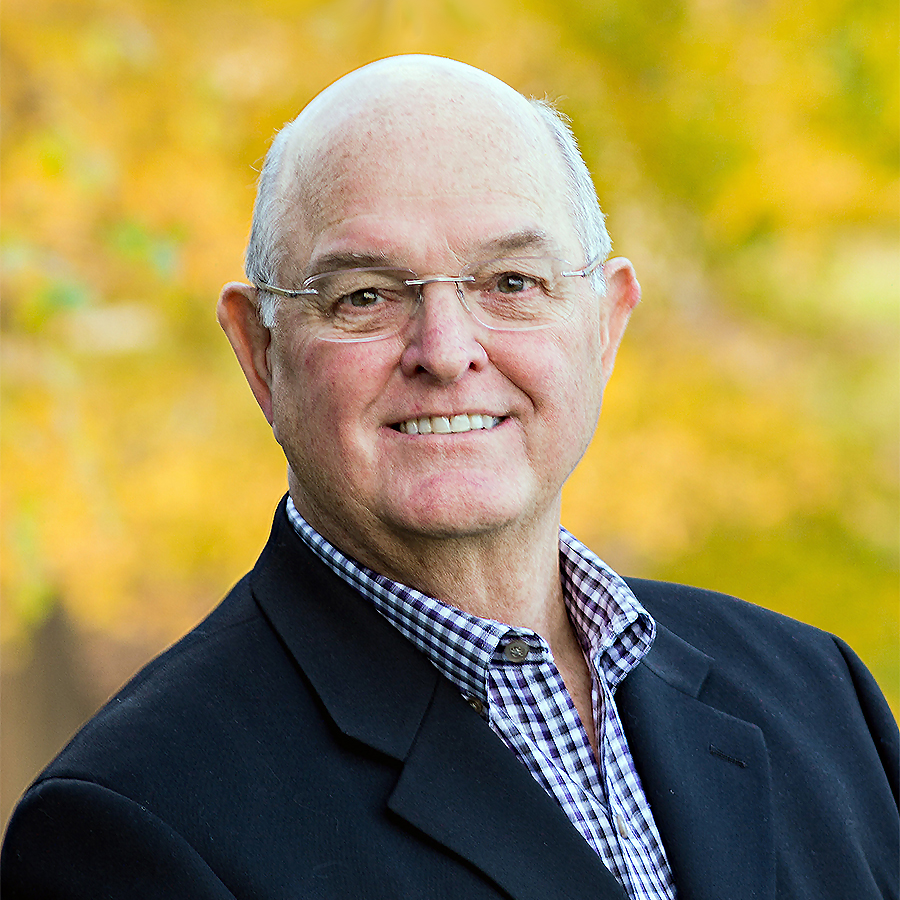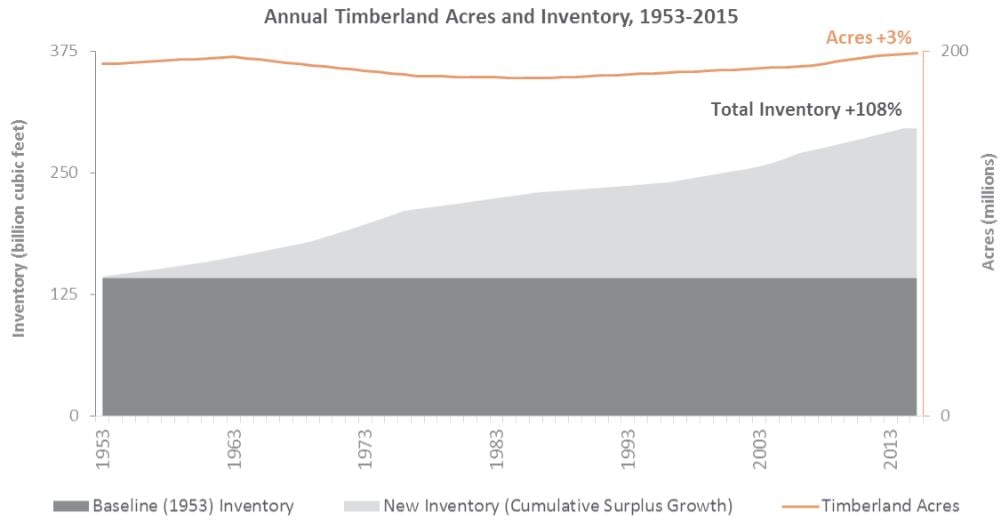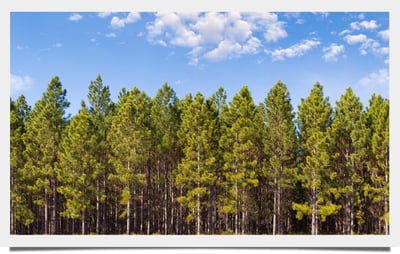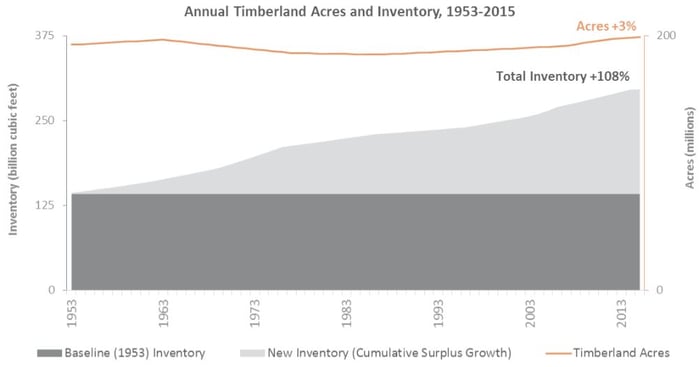4 min read
Forest Utilization Drives Both Economic & Environmental Returns
 Stan Parton
:
March 11, 2020
Stan Parton
:
March 11, 2020

As stated in my most recent blog post, the debate in Washington has progressed from whether policies should be put in place to combat climate change to what policies should be put in place. But we have learned to temper our expectations from Washington. To wit, Rep. Raul Grijalva (D-Ariz.), who happens to be the chairman of the House Natural Resources Committee, apparently doesn’t like the idea of planting more trees.
Grijalva opposes Rep. Bruce Westerman’s proposed Trillion Trees Act, legislation that seeks to plant 1 trillion trees globally by 2050 and incentivize the use of wood products as carbon sequestration devices.
“I don’t see it as comparable in terms of dealing with the depth of the issue that we’re confronting,” Grijalva said. “I don’t want it to divert from the fact that this Congress has to make some tougher decisions.”
It is simply hard to imagine how anyone would oppose global afforestation efforts for the long-term benefit of the environment, especially as the specter of climate change looms large.
To be fair, Grijalva naturally favors his own solution via the American Public Lands and Waters Climate Solution Act (H.R. 5435), “which would require the federal government to manage more than 600 million acres of federal public lands to reduce greenhouse gas emissions as a way to address climate change,” per a recent Bloomberg piece.
“That includes pausing all fossil fuel leasing on federal lands, promoting renewable energy development there, and studying how the U.S. can use public lands for carbon dioxide sequestration,” Bloomberg concluded.
Grijalva says that new legislation must prioritize a decrease in fossil energy emissions, which is also an important step in addressing climate change. “All the trees in the world won’t stand a fighting chance if we don’t cut our fossil fuel emissions,” he added.
We do not believe the debate should be between reducing fossil energy emissions vs. increased carbon sequestration by promoting forest growth and wood products utilization. On the contrary, we believe that we need, and must, do both. Forest products and wood bioenergy can play an important role and make significant contributions in the global effort to mitigate the damage caused by greenhouse gas (GHG) emissions.
Simply put, we need an “all of the above” approach.
Forest2Market has demonstrated through its independent analytical work that economic and environmental interests tend to work in concert more often than not. Our policy support work has shown direct statistical correlations between healthy commercial markets for wood products, including wood energy and an INCREASE in forest inventory and thus carbon sequestration, not the opposite.
How do we know this?
Most opponents of forest utilization (even for carbon-neutral biomass energy) have an incorrect view that timberland (the forest) is a pristine, untouched reserve in a static state. However, the manufacture of wood products continues to support our society in many beneficial ways: housing/building products, paper products, energy, textiles, chemicals, and a myriad of other products. In the US South—which is the primary source of wood pellets that are being utilized in markets around the world—the majority of timberland is owned by private individuals.
For the sake of convenience, let’s look at a single forest market to demonstrate how economic and environmental interests can work together.
Because of concerns about the growth of the wood pellet industry in the US, Forest2Market was commissioned to examine the history and sustainability of the US forest assets as policy support in 2017. For the study, we conducted a statistical analysis for a 70-year period of the forest acreage, demand and inventory, and we found some very interesting and counter intuitive statistically significant correlations.
Over the period from 1953-2015 in the US South:
- Timberland acreage remained approximately constant within 3 percent (during the period, urban expansion took some forestland but at the same time, due to the expansion of corporate farming, small family farms now untilled returned to forest essentially offsetting urban expansion).
- Population in the US South increased dramatically from 40.4 to 107.3 million people (166 percent) in 2015.
- Substantial economic growth occurred resulting in an increased demand for housing/lumber, paper and other forest products such as furniture. Real US GDP increased over six-fold from $2.6 to $16.4 trillion.
- This increase in population and economics resulted in a 57 percent increase of forest materials harvested from privately-held timberland. However, in the face of this significant increase demand, inventories of the forest INCREASED by an astounding 108 percent.

With this confluence of factors, one would assume that the timber inventory would be diminished. However, our findings demonstrated the opposite. During this time period, on the same forest land base, we saw a DOUBLING of forest inventory (which, of course, is sequestered carbon) compared to 70 years ago. The statistical correlation is that increased demand results in increased inventory, not the opposite. Why did (and does) this happen? Economics.
Timber and the land the timber is on are economic assets. As is the case with any commodity product, when there is a healthy market for their assets, owners actively manage these assets to maximize economic return. During this period of economic growth and demand, timberland owner figured out how to increase the productivity (tons available per acre) by more than double, primarily through advanced forest management techniques. Our private forest management system is a great example of how free markets can work.
The growth of the wood pellet industry and the emerging biofuels industry have created new demand for wood raw materials. This will lead to a further increase in forest inventory and in increase in sequestered carbon.
Do we need to reduce our use of fossil sources for energy? Absolutely. Do we need to increase carbon sequestration? Absolutely. But the policy support that is most needed is to level the economic playing field between fossil-based carbon and above ground bio-based carbon energy.
We welcome Rep. Bruce Westerman’s initiative for planting a trillion trees. If bioenergy were to be recognized and accepted for the contribution it can make in fighting climate change, the marketplace would naturally respond by increasing the forest inventory and, thus, carbon sequestration.
It’s simple economics.
Healthy demand and economic returns incent timberland owners to keep forestlands forested and to invest in advanced timber management practices, which benefit all of humanity both economically and environmentally.





